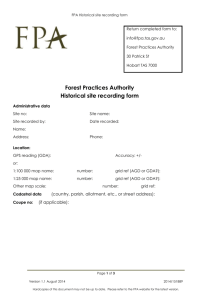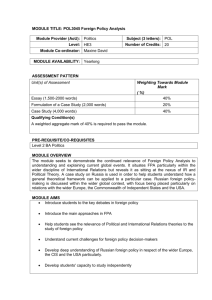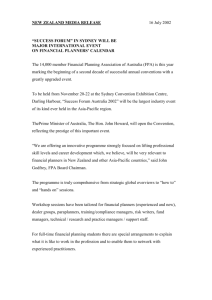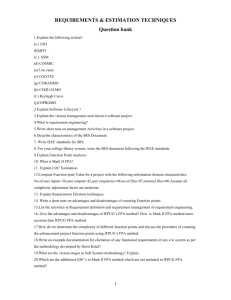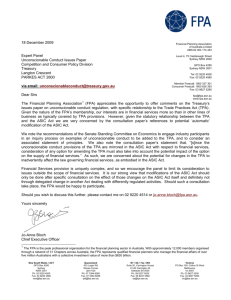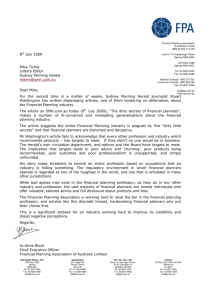Title Page
advertisement
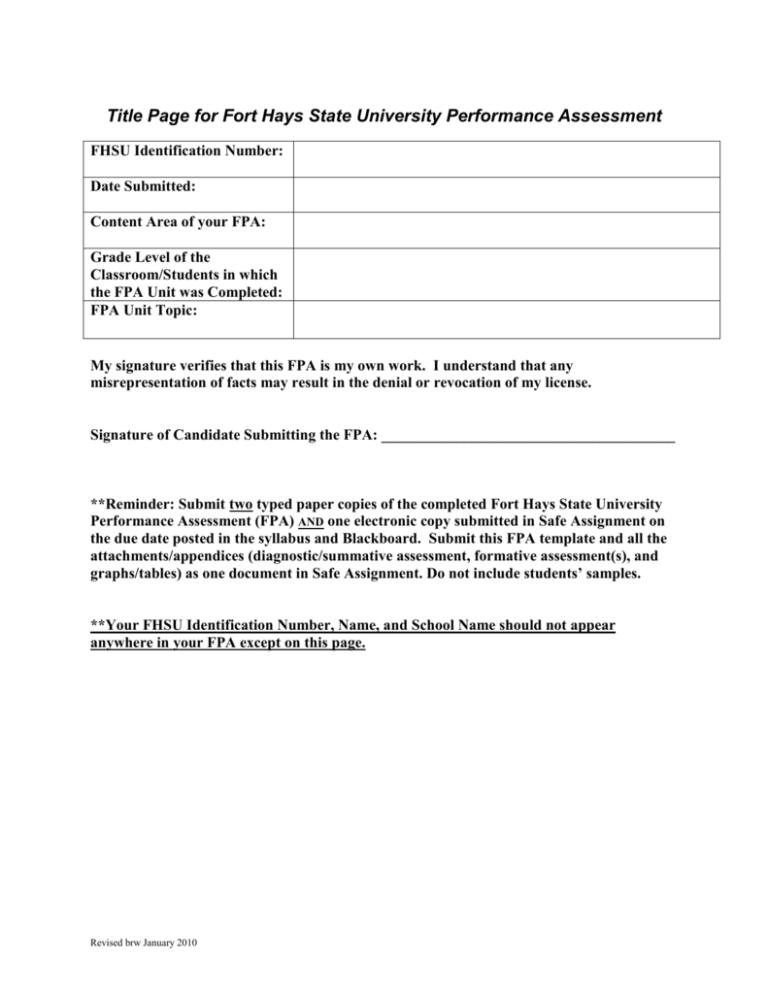
Title Page for Fort Hays State University Performance Assessment FHSU Identification Number: Date Submitted: Content Area of your FPA: Grade Level of the Classroom/Students in which the FPA Unit was Completed: FPA Unit Topic: My signature verifies that this FPA is my own work. I understand that any misrepresentation of facts may result in the denial or revocation of my license. Signature of Candidate Submitting the FPA: _______________________________________ **Reminder: Submit two typed paper copies of the completed Fort Hays State University Performance Assessment (FPA) AND one electronic copy submitted in Safe Assignment on the due date posted in the syllabus and Blackboard. Submit this FPA template and all the attachments/appendices (diagnostic/summative assessment, formative assessment(s), and graphs/tables) as one document in Safe Assignment. Do not include students’ samples. **Your FHSU Identification Number, Name, and School Name should not appear anywhere in your FPA except on this page. Revised brw January 2010 FPA Criterion 1-Contextual Information/Learning Environment Adaptations Table 1: Contextual Factors/Adaptation Chart Contextual Factor Given Diversity, Implications for Instruction Gender: # of Males (M) # of Females (F) Achievement: # In need of Remediation (B) # Ready for Instruction (R) # Advanced (A) Gender: M=Males, F=Females Achievement: B=Below, R=At/Ready, A=Above Environmental Factors (district, school, and classroom, all three must be present): Community (urban, rural, or suburban / culture make-up): Classroom’s Ethnic Make-up: Classroom’s Gender Make-up: School’s Socio-Economic Status (SES) Make-up: Students with Special Needs/At Risk Students (See Adaptations in FPA Handbook): Demonstrates an Awareness of Students’ Background Characteristics: Demonstrates an Understanding of Cognitive and Non-Cognitive Class Features: Revised by brw January 10, 2010 1 FPA Criterion 2-Learning Goals and Objectives Table 2: Goal(s) and Knowledge, Skills, and Reasoning Objectives Goal: To increase or improve (what) for (grade level) students. Lower Level/ Subject Matter Knowledge: (K) State Standard Benchmark K1 K2 Middle Level/Skills, Applications: (S) State Standard Benchmark S1 S2 Higher Level/Reasoning Ability: (R) State Standard Benchmark R1 R2 Indicator Objective Indicator Objective Indicator Objective Aligned with State/National Standards: Lower Level/Content Knowledge Objectives: Middle Level/Skill or Application Objectives: Higher Level/Reasoning Objectives: FPA Criterion 3-Instructional Design and Implementation Table 3: Instructional Planning, Assessments, and Evidence of Achievement Date Objective Activities Assessment Adaptations Revised by brw January 10, 2010 2 %Met % tab Aligned with Goals and Objectives stated in FPA Criterion Two: Progressively Sequenced: Provides Evidence that Context Data (see Criterion 1) is Used in Instructional Decisions: Use of Community Resources that Strengthen Learning: Multiple Instructional Strategies: Provide and Adapt Instructional Strategies: Active Inquiry and Learner Centeredness: FPA Criterion 4-Demonstration of Integration Skills Demonstrates the Ability to Integrate Instruction Across or Within Subject Matter Fields: Reading Instruction Adaptations (3 specific reading strategies): Use of Technology Connected to the Objectives of the Unit (candidate and students): Revised by brw January 10, 2010 3 FPA Criterion 5-Analysis of Classroom Learning Environment Encourages Effective Communication Among Students (within the unit): Effective Classroom Management (3 strategies: individual, class, school): Classroom Environmental Factors that Affect Learning (within the unit): Positive Student Motivation (within the unit): Environment Supportive of Student Interaction in Learning Activities (within the unit): FPA Criterion 6-Analysis of Assessment Procedures Table 4: Assessment Plan Table Type of Learning Assessment Objective(s) Diagnostic (Pre) Formative Summative (Post) Format of Assessment Table 5: Evidence of Assessment and Achievement Student Gender Achievement Diagnostic Formative M/F B/R/A Score Score 1 2 Gender: M=Males, F=Females Formula: Points Possible Summative Score Pre/Post Learning Gain Achievement: B=Below, R=At/Ready, A=Above Summative % – Diagnostic % = Actual Gain = Learning 100% – Diagnostic % Potential Gain Gain Revised by brw January 10, 2010 Percent Mastered 4 Documents Sources of Student Readiness to Engage in the Unit: Discusses Format and Content of the Formal Diagnostic Assessment Instrument: Presents Diagnostic Assessment Data in Table or Chart: Discusses Format and Content of the Formative Assessment(s): Presents Formative Assessment Data in a Table or Chart: Discusses Format and Content of the Summative Assessment Instrument: Presents Summative Assessment Data in a Table or Chart: Table 6: Level and Overall Percent of Student Achievement on Each Objective Student Objective Objective Objective Objective Objective Objective Total K1 K2 S1 S2 R1 R2 Results 1 2 3 Overall Results Includes Percentages of Students Who Achieved Unit Objectives (Overall Results): Describes the Level of Student Achievement on Each Unit Objective: Revised by brw January 10, 2010 5 Provides Evidence of Disaggregation of Data for at Least Two Groups: Graph Gender here Graph Achievement Levels here M/F B/R/A total learning gains total learning gains Diagnostic Assessment is Utilized for Instruction and Evaluation: Formative Assessment is Utilized for Instruction and Evaluation: Summative Assessment is Utilized for Evaluation and Planning for Subsequent Instruction: Multiple Types of Assessment: Alignment of Assessments to Objectives and Instruction: Student Evaluation and Performance Criteria (tied to Criterion 2): FPA Criterion 7-Reflection and Self-Evaluation Successful Activities (tied to Criterion 2 Knowledge, Skill, & Reasoning objectives): Implications for Future Teaching of This Unit Including a Focus on Unsuccessful Objectives (tied to Criterion 2 Knowledge, Skill, & Reasoning objectives): Revised by brw January 10, 2010 6 Successful Classroom Adaptations and Implications for Future Adaptations Communication with Students, Parents, and other Professionals while teaching the unit: Information From Accreditation Process (define QPA, NCA, or School Improvement & your involvement): Implications For Professional Development/Continuous Learning: (2 goals) Goal 1 (insight while teaching unit): How will you attain this goal? (professionally): Goal 2 (insight while teaching unit): How will you attain this goal? (professionally): Revised by brw January 10, 2010 7
